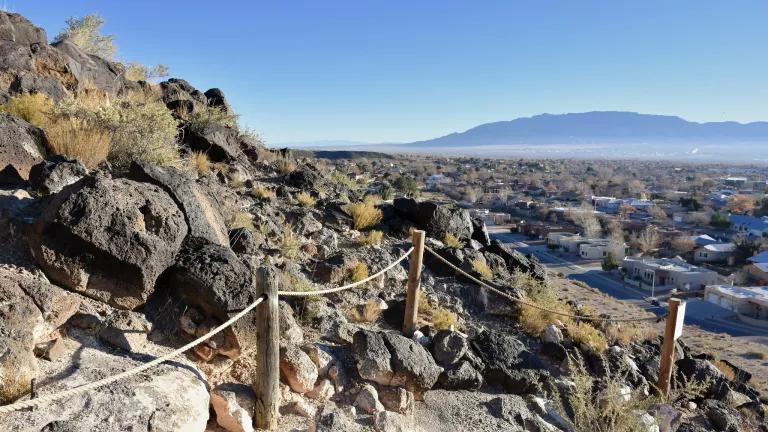
The national Weatherization Assistance Program (WAP) turned 40 years old about a month ago, and there’s a lot to celebrate. The program, which got its start during the energy crisis of the 1970s, has made more than 7 million low-income homes considerably more energy efficient, saving cash-strapped, single-family households an average of $283 a year. These families sometimes spend more than 20 percent of their incomes on electricity and heat—far more than the national average of 2.7 percent.
All on its own, every year WAP cuts our country’s greenhouse gas emissions by a sizeable two million metric tons. The program supports 8,500 jobs, and in 2008, it increased national economic output by $1.2 billion. One WAP participant summed the program up beautifully for NRDC a few years back: “It’s a wonderful, wonderful project. Everybody who needs it should have it.”
That’s currently next to impossible, however, due to the current Congress. Energy legislation pending in now out-of-session Congress would cut funds for the program even though only a small fraction of one percent of the country’s 35 million eligible residences can currently enroll each year—fewer than 35,000 homes. That’s plain crazy, since making low-income homes more energy efficient—apartments as well as single-family homes—creates a host of benefits. Benefits not just to residents but to society as a whole: significant cost-savings, improved public health, increased productivity, more stable families and neighborhoods, a better functioning climate. Really, what’s not to like?
So let’s laud the program on this anniversary, and beef it up not cut it down. Let’s use it as an example for state and local governments and utility efficiency programs to follow. Low-income homes, especially those in affordable, multi-family buildings, are notoriously underserved by efficiency programs. That’s something NRDC and our allies are working hard to remedy through our 12-state Energy Efficiency for All project.
Who benefits from home improvements thanks to WAP? Dorothy Johnson of Hannibal, Missouri, is the kind of person members of Congress had in mind when they created WAP to “increase the energy efficiency of dwellings owned or operated by low-income persons, reduce their total energy expenditures, and improve their health and safety.” A retired factory worker when NRDC interviewed her a few years back, she lived in a home that was sometimes so cold in winter that she couldn’t get out from under the bedcovers.
High heating bills meant “it was a stretch to make ends meet,” she said. “I was having a hard time paying for medicines.” Weatherization changed all that. “My house has been just wonderful,” she told us. When temperatures dipped into the 20s, there were no more frigid breezes blowing in through the roof and the floor. Leaky spots around the windows and doors had been caulked. As a result, she said, “I’ve been keeping my doctor’s appointments better and I have a little extra money because my utility bill isn’t so big.”
Indeed, Congress designed WAP with multiple objectives in mind: improved energy performance to be sure, but also environmental, social, health, and safety benefits.
And WAP has succeeded with flying colors. Recent analyses show energy savings from the program exceed costs by a factor of 1.4. Add to those victories so-called “non-energy benefits”—everything from improved public health to fewer fires because enrolled households are less likely to use cooking stoves and faulty space heaters to warm their homes. Combine these two types of advantages and WAP generates $4 in benefits for every dollar invested. Talk about ROI!
These benefits start in houses and apartments and spread out to society as a whole. Here’s just one example: Poorly sealed homes let moisture in along with heat and cold. That can lead to mold, which, in turn, can trigger and even cause a host of health problems, including asthma in both kids and adults. Improving air sealing and addressing mold, as weatherization does, means residents breathe better. Kids miss less school and can study more; parents miss less work and earn more money.
The rest of us gain, too. Since taxpayers pay about 40 percent of the country’s healthcare costs through programs like Medicare and the Children’s Health Insurance Program, our costs drop when low-income people need fewer medical services. When fewer people are in arrears to their utilities because their bills are lower, other utility customers don’t have to cover the costs. Boosting energy efficiency means we demand less of our energy infrastructure—fewer expensive power plants, transmission lines, and substations to build and pay for. Families are more stable when they can afford to pay their bills, requiring fewer social services. And everyone’s health improves when we help stabilize global warming, and when fewer dangerous air pollutants, such as mercury, sulfur dioxide, and particulate matter, pour out of power plant smokestacks and building furnaces.
40 years in, there are ideas for improving the weatherization program. The first one is a no-brainer: fund the program fully. Just like businesses and other institutions, the local agencies that administer WAP need the kind of certainty about funding that will allow them to best use our tax dollars and plan for the future.
Another idea: Move once again to the cutting edge—weatherization helped pioneer residential energy efficiency investments—and include renewable energy upgrades, such as cost-effective solar heat and hot water, and solar electricity as complements to the energy efficiency projects currently central to WAP’s work. Doing so can not only continue to save participants money on their energy bills, it can improve their health and safety, and the health and safety of their communities, just as Congress planned.



